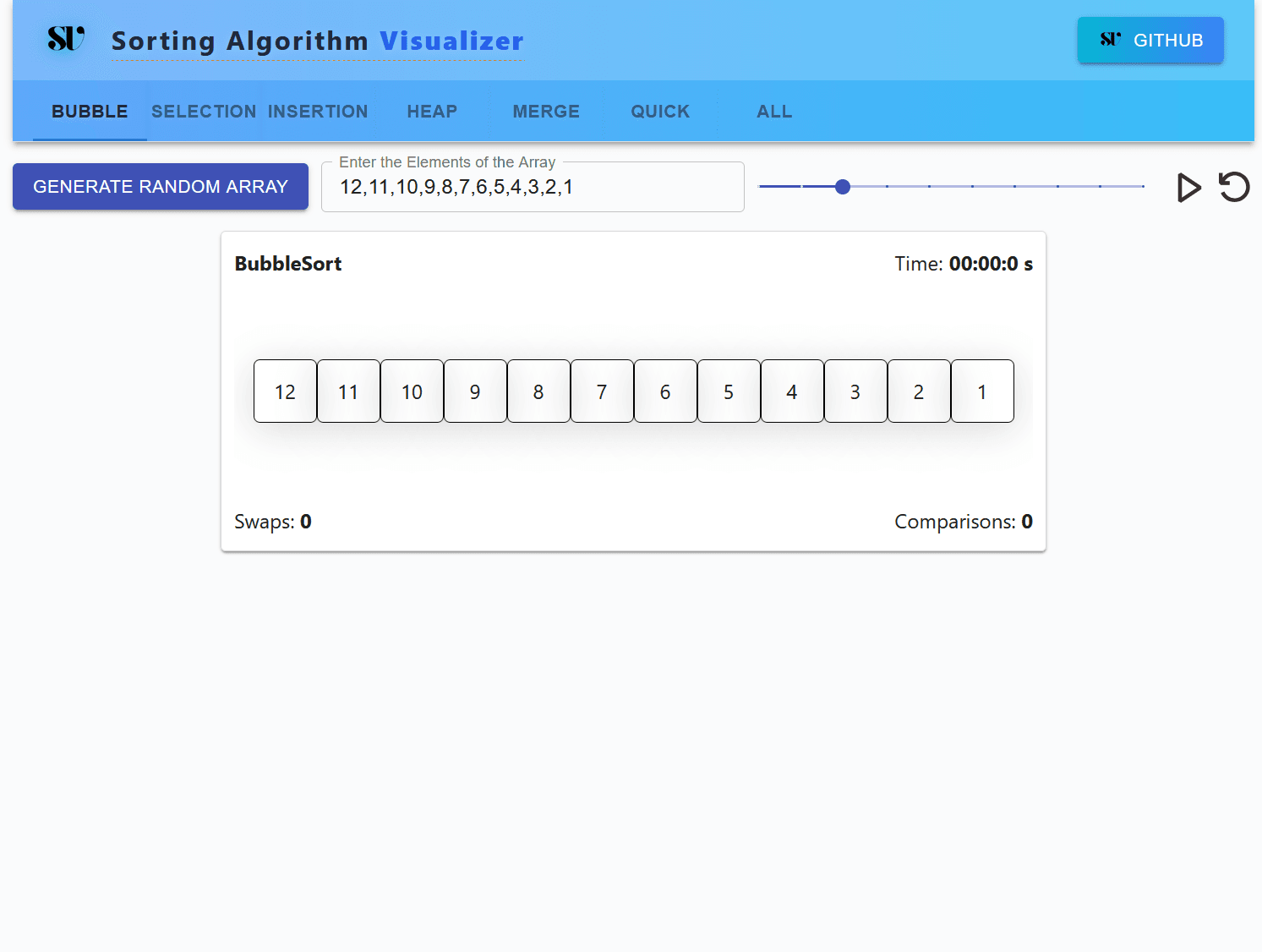
Sorting Algorithm Visualizer: Learning Algorithms Visually
An interactive React app that brings sorting algorithms to life with real-time animations, performance metrics, and intuitive controls.
TL;DR
Built an interactive sorting algorithm visualizer with React, Material-UI, and Zustand featuring real-time animations, performance tracking, and side-by-side comparisons. Perfect for understanding algorithm behavior visually.
Who This Is For
- Computer science students learning algorithms
- Frontend developers building educational tools
- Anyone wanting to understand sorting algorithms better
Prerequisites: Basic React knowledge, understanding of arrays and loops, familiarity with algorithm concepts helpful.
I've always found sorting algorithms fascinating they're some of the first concepts you learn in computer science, but it's easy to forget what's actually happening under the hood. So I built Sorting Algorithm Visualizer, a web app that makes these algorithms tangible and easy to understand.
This project helped me combine React, Material-UI, and Zustand into something practical and educational. Watching algorithms sort numbers in real time feels way more engaging than reading pseudocode.
Project Overview
An interactive web app that visualizes sorting algorithms with real-time animations, performance metrics, and intuitive controls to help understand how different algorithms work.
🎯 What It Does
- Animated Visualizations: Watch popular sorting algorithms like Bubble Sort, Quick Sort, and Merge Sort step through each operation.
- Controls & Speed Adjustment: Pause, play, reset, and control animation speed to see every detail.
- Performance Metrics: Track swaps, comparisons, and execution time as the algorithm progresses.
- Custom Arrays: Generate random arrays or input your own numbers to sort.
- Side-by-Side Comparisons: Compare how different algorithms handle the same data.
Whether you're a student trying to grasp sorting concepts or just someone curious about algorithm behavior, it's designed to make the experience clear and interactive.
Supported Algorithms
- Bubble Sort - Simple but slow O(n²) - Quick Sort - Fast divide-and-conquer O(n log n) - Merge Sort - Stable sorting O(n log n) - Insertion Sort - Good for small arrays - Selection Sort - Simple in-place sorting
🧠 What I Learned
1. React Hooks for State and Animation
I leaned heavily on useState and useEffect to control the animation lifecycle, timers, and rendering updates. Managing asynchronous visualization steps in a clean way was a great exercise.
// Example of animation state management
const [isAnimating, setIsAnimating] = useState(false);
const [currentStep, setCurrentStep] = useState(0);
useEffect(() => {
if (isAnimating && currentStep < steps.length) {
const timer = setTimeout(() => {
setCurrentStep((prev) => prev + 1);
}, animationSpeed);
return () => clearTimeout(timer);
}
}, [isAnimating, currentStep, animationSpeed]);2. Zustand for State Management
Using Zustand made it easier to centralize global state (like array data, animation status, and speed settings) without adding too much boilerplate.
3. Material-UI Design System
Material-UI components helped me build a polished, accessible UI quickly. From sliders to dialogs, everything felt consistent and modern.
4. Algorithm Implementation
Rewriting each algorithm in JavaScript and instrumenting them to emit visualization steps deepened my understanding of how they work at a low level.
Performance Challenge
Animating large arrays at high speed required careful optimization of state updates and re-renders to maintain smooth performance.
5. Performance Considerations
Animating large arrays at high speed was a challenge. I had to optimize how state updates triggered re-renders to keep the experience smooth.
🛠 Tech Stack
- React (with Hooks)
- Zustand for global state
- Material-UI for components and styling
- Vite for fast development builds
📷 Screenshot

🔗 Try It Out
🙌 Final Thoughts
Building this visualizer reminded me that seeing something happen step by step is often the fastest way to learn. I'm hoping it helps others the same way it helped me solidify how these algorithms work.
What's Next
I'm planning to add more algorithms like Heap Sort and Radix Sort, plus features like algorithm comparison charts and educational tooltips.
If you have ideas for new features, additional algorithms, or performance improvements, feel free to reach out I'd love to collaborate or hear your feedback.
— Maruf